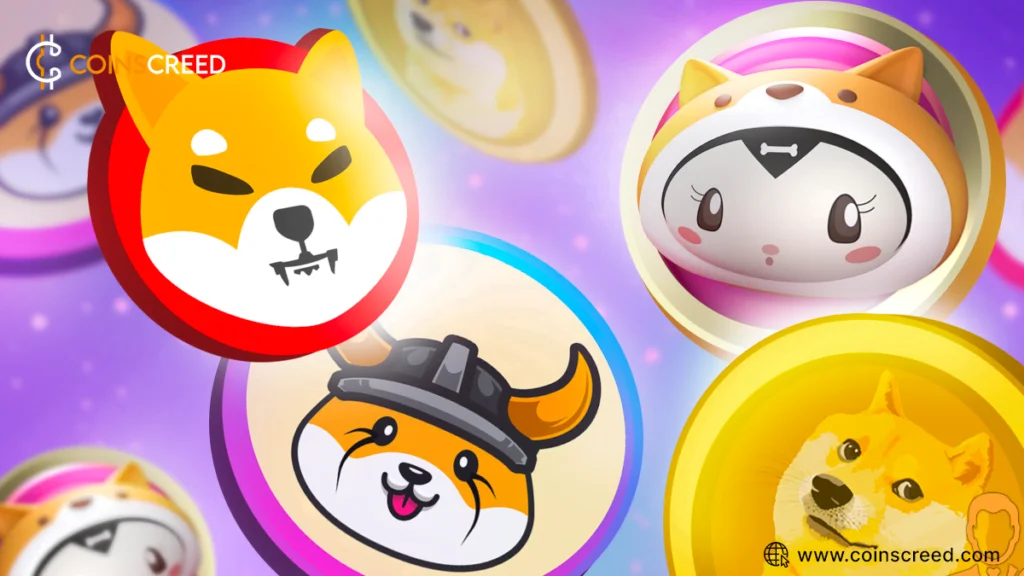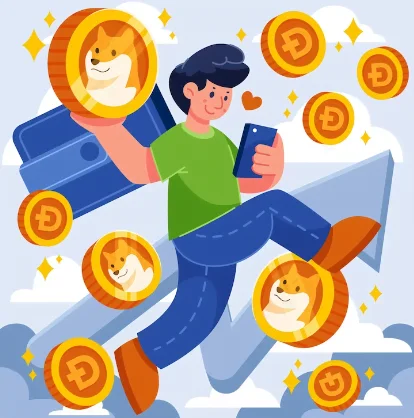Cryptocurrencies have come a long way since Bitcoin was created in 2009. Over the past few years, the popularity of meme coins has grown significantly, with Dogecoin being the most famous example. This article will explore the history and evolution of meme coins in the crypto market.

What are Meme Coins?
A meme coin is a cryptocurrency term for popular currencies, sometimes depicted with comical or animated memes, that enthusiastic online traders and followers support.
From their name, Meme coins are cryptocurrencies created as a joke or a meme. They are usually based on popular internet memes, and their primary purpose is to be an entertaining way to invest in cryptocurrencies. Most investors do not take meme coins seriously, and their value is often highly volatile.
History of Meme Coins
The first meme coin was Dogecoin, created in 2013 by Billy Markus and Jackson Palmer. The idea behind Dogecoin was to create a cryptocurrency that was fun and easy to use. Dogecoin comes from the famous Doge meme, which features a Shiba Inu dog.
Dogecoin quickly became popular, with its market cap reaching $2 billion in May 2021. However, Dogecoin’s popularity also brought a lot of volatility, with the coin’s value fluctuating wildly.
The success of Dogecoin led to the creation of many other meme coins, such as Shiba Inu, SafeMoon, and Akita Inu. These coins were created to cash in on the popularity of Dogecoin and other meme coins.
Understanding Meme Coins
As mentioned earlier, Meme coins are a cryptocurrency genre loosely defined as having an exuberant online community supporting the currency’s growth.
Some notable meme coins are Dogecoin, Floki, and Shiba Inu. The category extends to lesser-known currencies such as Baby Doge, DogeChain, Pitbull, Tamadoge, and Dogelon Mars.
Like other cryptocurrencies, meme coins rely on blockchain technology, a distributed database that tracks virtual assets, including cryptocurrencies and non-fungible tokens (NFTs).
Most meme coins are purely trading instruments, unlike Ethereum and other utility currencies tied to specific blockchain features. Major cryptocurrencies such as Bitcoin, Ethereum, USD Coin, XRP, Cardano, Solana, Polygon, and Polkadot generally are not considered meme coins.

Evolution of Meme Coins
Meme coins have come a long way since the creation of Dogecoin. Today, there are hundreds of meme coins, each with unique characteristics and purposes.
One of the most notable trends in the evolution of meme coins is the rise of DeFi (Decentralized Finance) coins. DeFi coins are cryptocurrencies built on decentralized blockchain platforms, such as Ethereum. These coins allow investors to earn high investment returns by participating in decentralised financial protocols.
One example of a DeFi meme coin is SafeMoon. SafeMoon is a cryptocurrency created in 2021 and quickly gained popularity due to its unique tokenomics. SafeMoon charges a 10% fee on all transactions, with half going to liquidity providers and the other half being burned. This mechanism creates scarcity and value for the coin as the number of coins in circulation decreases over time.
Another trend in the evolution of meme coins is the rise of community-driven coins. These coins are created by communities of investors who are passionate about a particular cause or idea. One example of a community-driven meme coin is Hoge Finance.
Pros And Cons Of Meme Coins
Meme coins have taken the cryptocurrency world by storm in recent years with their playful names and eye-catching logos. However, like any investment, meme coins come with their own set of pros and cons. Here are some benefits and drawbacks of meme coins.
Pros
- High potential for profit
- Easy accessibility
- Community support
> High Potential for Profit
Meme coins, such as Dogecoin, have seen unprecedented growth in their value, with some coins increasing by thousands of percentage points. This means that investing in meme coins can yield high returns for investors.
> Easy Accessibility
Unlike traditional investment avenues like stocks and bonds, meme coins are easily accessible to anyone with an internet connection and a cryptocurrency wallet. This means investors don’t have to go through brokers or intermediaries, reducing transaction costs.
> Community Support
Meme coins often have an enthusiastic and passionate community of investors who support and promote the coin. This can create a sense of community and social proof, contributing to the coin’s growth and value.
Cons
- High risk
- Lack of regulation
- Short term focused
> High Risk
Meme coins are highly speculative and volatile. Their value can skyrocket in hours, but it can also plummet just as quickly. This means that investing in meme coins is not for the faint of heart and carries a high level of risk.
> Lack of Regulation
Meme coins are not regulated by any governmental or financial body, meaning investors have no oversight or protection. This lack of regulation can make investing in meme coins risky and potentially dangerous.
> Short-term Focused
Meme coins are often short-term focused, with investors looking to make a quick profit and move on. This means these coins usually have little long-term sustainability and can quickly lose value once the hype dies.
Conclusion
Meme coins have come a long way since the creation of Dogecoin. Today, there are hundreds of meme coins, each with unique characteristics and purposes. While meme coins are often viewed as a joke, they have also become a significant part of the crypto market.
Many investors see them as a way to diversify their portfolios and participate in new and exciting projects. However, investors should be cautious when investing in meme coins, as their value is highly volatile, and many are scams or pump-and-dump schemes.
